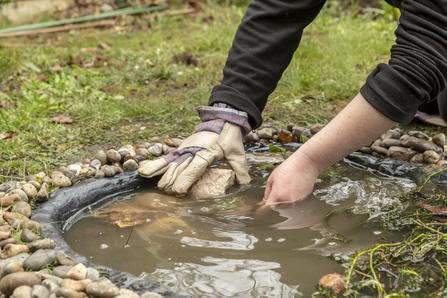
Penny Dixie
Elliot Levi Hanratty

Penny Dixie
Perfect ponds
Ponds are amazing ecosystems that can support an incredibly wide range of species. Even a small area of water such as an old bucket in a hole is a pond that will support wildlife – a pond doesn’t have to use up lots of space.

Gianpinox / Getty
Keep it messy and natural
You probably know by now that nature isn’t neat. We really do love to stress that mess is best! Most of the time these suggestions use less effort and do amazing things for wildlife! It’s worth noting that you can still have a tidy garden whilst enacting all of these suggestions.

Hamish Blair
A helping hand
There are many more ways you can go above and beyond, turn your garden in to a go-to destination for wildlife during the winter. Often you just have to think about what they really need to make their stay memorable and worthwhile.
Join us as a member online today to help local wildlife thrive!